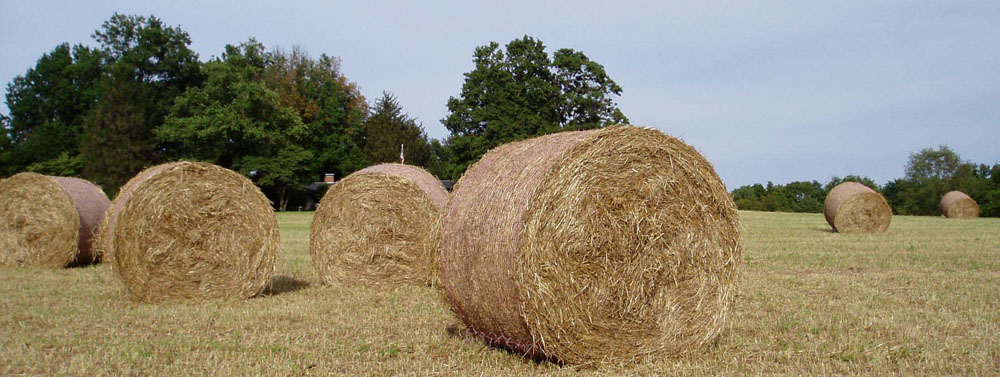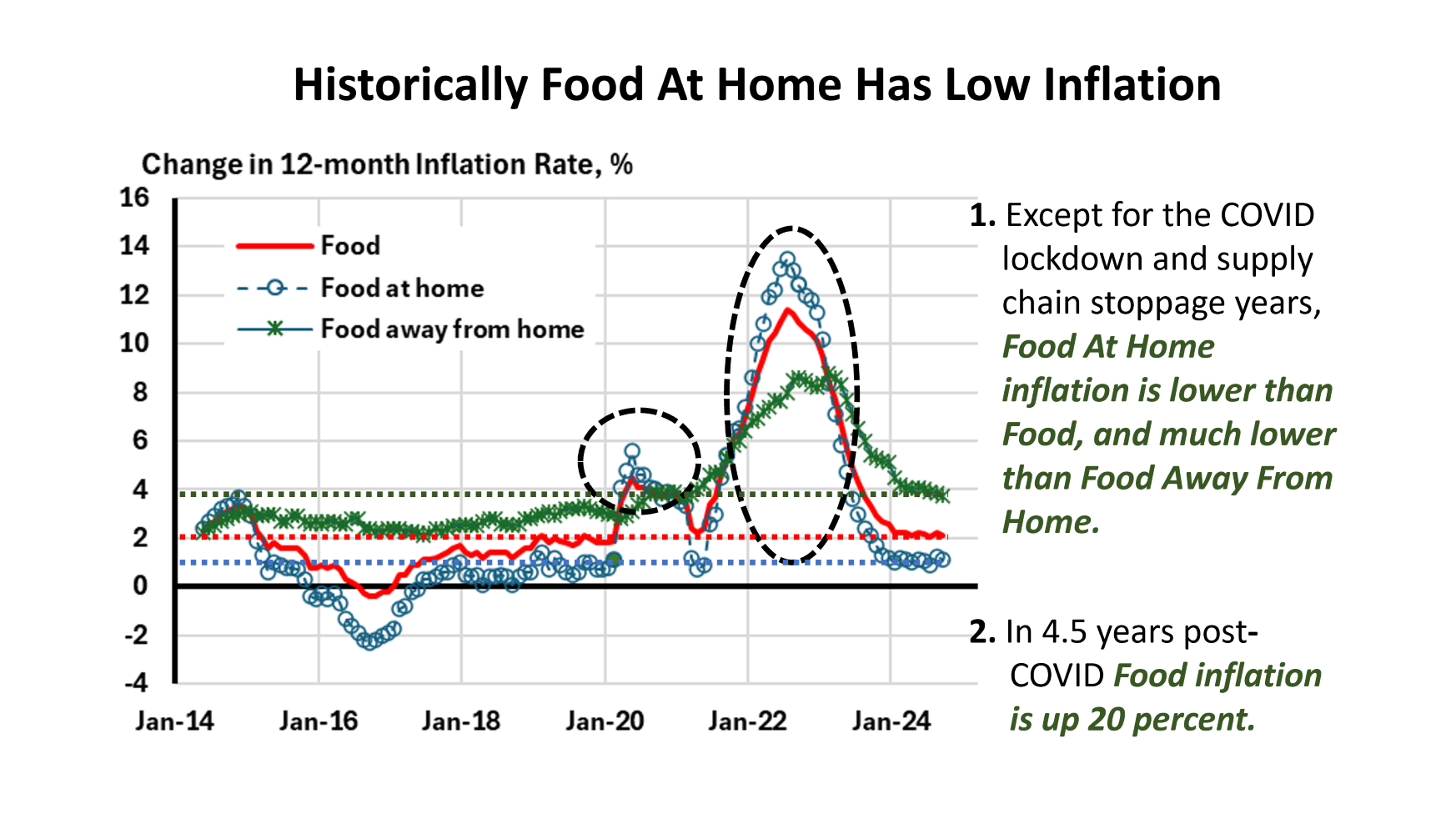Food Prices are Not Driving 2024 Inflation – Real Adventures in Economics
Food prices have been inflated. Food, as a category in the Consumer Price Index (CPI) is no longer driving inflation. The Wall Street Journal reported on November 2, 2024, that grocery distributors are causing food prices to increase and cause inflation. The context is the problem. Grocery distributors may be increasing prices, but it is not causing inflation. The price increases reported by the WSJ are the cost of doing business. The WSJ article does a good job of describing the food system infrastructure.
The last 10 years of Bureau of Labor and Statistics, CPI data was used for today’s chart. Food At Home is grocery store retail prices and Food Away From Home is food services. These are restaurants, but also include meals served by institutions like schools and prisons. For discussion purposes, food at home is grocery store retail and food away from home is restaurant retail food.
Food Inflation has been Difficult
Over the last decade, the first-time grocery store food rose above restaurant food was when the economy and restaurants shut down for the pandemic in March 2020 (Food At Home rate in chart has solid circle). The start of the pandemic caused a food panic. Grocery stores in some areas of the United States rationed staples like bread. Several meat packing plants had to shut down because too many of their line workers were sick and couldn’t work. In this phase, demand for food increased rapidly and even food supply suffered a shock. The result was grocery store food prices rose unexpectantly fast.
In 2021 and 2022, grocery store food prices continued to increase with supply chain stoppages. Ports backlogged imports and exports and Russia invaded Ukraine. Russia and Ukraine are world suppliers of grains and energy. Although the US food and energy supplies were not directly impacted, it sent global food and energy commodity prices soaring We are part of those global dynamics. Then food prices settled down.
Food Inflation is Currently Stable
All of 2024, Food CPI has been at 2 percent inflation. This is lower than the CPI for all prices. A 2 percent increase in inflation is considered an acceptable increase in prices. Until, food CPI increases become negative for an extended period of time, food prices estimated by the Bureau of Labor and Statistics will continue to increase.
Food price increases can be negative. This happened from the end of 2015 until midway through 2017 for food at home retail prices. This means the price of groceries was reset. Food at home prices have a direct link to the highly volatile price of commodities.
Food product manufacturers can set their own prices, and as the Wall Street Journal pointed out, food distributors can increase their prices. The price moderator in all these cases is competition. Competition for customer business forces retailers to be responsive.
Food CPI values are the average of Food At Home CPI and Food Away From Home CPI. The red solid line in the chart is always between the Food At Home inflation rate and the Food Away From Home CPI rate. The horizontal dotted lines in this chart are simply indicators of the inflation rates released yesterday, November 13, 2024, for October. More frequently than not over the last 10 years, annualized Food CPI rates have been close to current price increases.
Food inflation has increased 20 percent since March 2020 (start of pandemic)
Food prices can go down, but it will not take an act of congress. It will take competition for consumers food purchasing dollars. Increased food prices in 2022 was difficult, but higher food prices are the new tomorrow. If the current low agricultural commodity prices cause another prices correction with negative Food At Home prices, this will allow food prices to drop.
Food Prices are Just a Little More Complicated
In a September 2024 blog, four kinds of grocery nut-like snack protein prices were compared on the basis of label ingredients. Consumer food choices are not simple.
- Hemp seed snacks cost 4 times the cost of peanut, almond, and sunflower seed snacks for similar amounts of fat, protein, carbs, and sodium.
- Farm gate prices differ from grocery store retail.
- Grocery store retail differs from restaurant retail.
The food value chain is typically written as
Inputs -> Farmers -> Processors -> Manufacturers -> Distributors -> Retailers.
Breaking retail into grocery and restaurant retail, and combining processors, manufacturers, and distributers into a value-added category, a more realistic model might be,
Food restaurant retail prices = f(grocery retail (distribution (processing (commodities (inputs))))).
Every level of the food value chain is interdependent on the level before. And yes, it is a little more complicated than simply summing level effects.
- The Case of Pricing Wheat from Farm to Food
- Seminal Role of Commodities in Food Prices
- Making Sense of Food Retail through Coffee
This is simply the value chain for food, when it is overlain with the value chain for energy and environmental services (carbon markets), just to name two others, the other non-food markets influence the price of food.
- Corn is More Than Food – Real Adventures in Economics
- BioTown, USA – Sourcing Local Biomass Energy Feedstocks
- Turn of the Century Biofuel Feedstock Dynamics
Food prices are complicated. Our mission at Biomass Rules is to clarify the opportunities and challenges. The pandemic is over. The elections is over. The US food system is secure. There are always areas that need attention like food waste and food prices, but there is no crisis that requires increased fear in the security of our food system.
Food prices are not a crack in the US economy. Be assured that the food supply is safe and secure.



Comments
Food Prices are Not Driving 2024 Inflation – Real Adventures in Economics — No Comments
HTML tags allowed in your comment: <a href="" title=""> <abbr title=""> <acronym title=""> <b> <blockquote cite=""> <cite> <code> <del datetime=""> <em> <i> <q cite=""> <s> <strike> <strong>